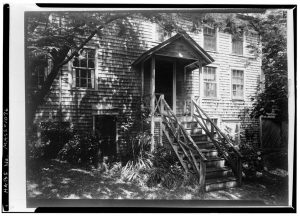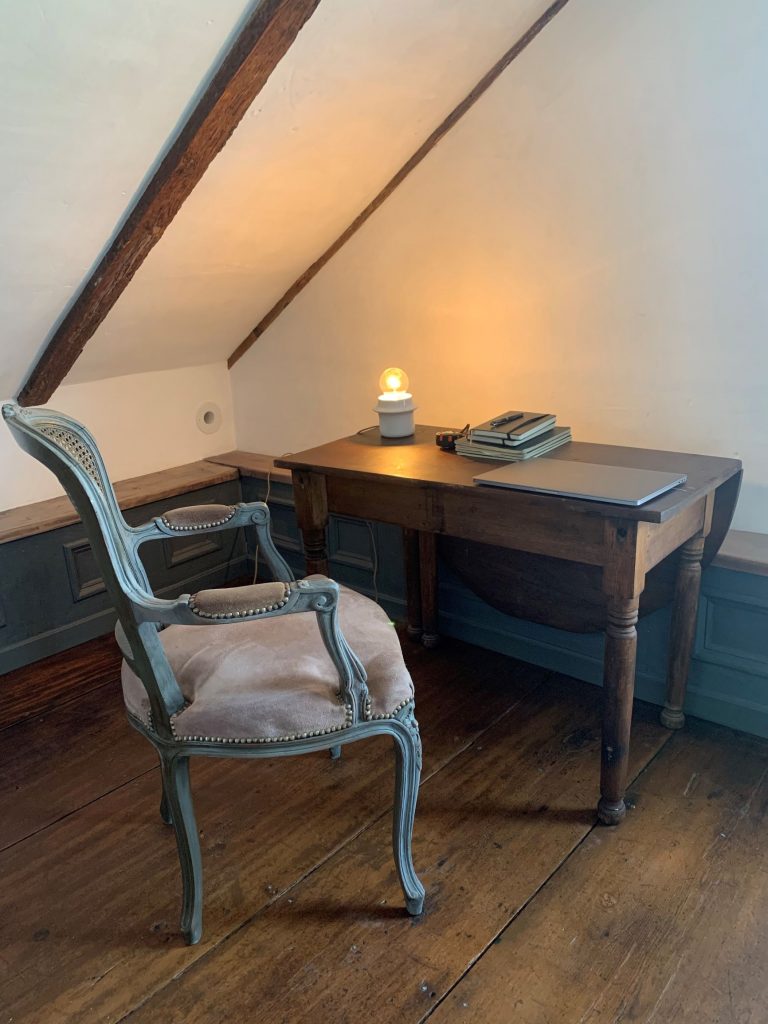“So, what would you like for your birthday? I know you aren’t really much for parties, at your age…and besides, we are having a pandemic. But’s a big one, after all… 300.”
There was no verbal answer, because of course the three-hundred-year-old in question was a house, not a person, although clearly with its own personality. Specifically, numbers One and Three Stone Alley. My home, now, although my lifetime is short in comparison.

The house has sheltered generations of Eastons, Andrews, Parkers, their ancestors, and their friends and relations over the years. It has weathered many a storm, set back on the north side of Stone Alley since 1720. It may be older of course, as houses were moved from the original Sherburne to what became the town in 1720. Some of its hefty beams are consistent with houses that were moved, according to experts. But still, 300 years in the same spot… “pretty good for America,” as a visiting Brit once commented.
What does it mean, as Rilke asked, to live in the same house from youth to age? It takes a long time to really get to know a person, so how much longer it takes to get to know a house. Every board and brick has its personal history. Fashions, styles, preoccupations, have come, and gone, and come again, while it sat still. It holds so many memories both happy, sad, and instructive for me, accumulated from childhood to the present day.
And other memories have worked their way in along the way, connected by family story or physical evidence. The boat mast my father put in to replace a beam. The workbench for cutting slate. The floor-boards lined with 1849 newspapers, the names on the cellar wall, the business cards from days gone by, the newspaper stuffed in a crack for insulation. “Chamberlain Successful, War Averted.” Huh. I know how that one turned out.
What is the use of memory, of history? Is it only to be swept up and discarded for a momentary gratification, condemned to the C and D building* and its discontents? Or could it be an antidote to the vanity of the moment? Eighteenth Century poet William Cowper noted how we are “pleased with novelty.” Human nature has not changed, although what was once called natural philosophy is now known as science. And our little lives are still rounded in a sleep. So, an antidote to the vanity of the moment might be just what the doctor orders.

Yes, the house has its slopes and sags, its creaks and groans, and so do I, as it happens. Is age something to be respected, or simply thrown away? I am not ready to be thrown away. Yet, I have every hope that the old house will outlive me. It has had a lot of practice, after all.
So how did I resolve the anniversary?
“What do you most need?”
The answer came immediately, “the roof.”
And so that’s what I gave it. At least, the parts most needing repair. Yes, “another crisis averted.” There’s still more to do, of course. There always is. But to answer the need of the moment, without succumbing to the vanity of the moment; to have the patience to live with irony and humor, is the work of more than one lifetime. Each generation can only do its bit, and hope the next one takes the hint.
*Construction and Demolition at the Nantucket dump have their own building. In addition to the ruins of the finest craftsmanship of the 18th and 19th centuries, often the material there is practically new, un-rotted cedar or tropical hardwoods.
Ginger Andrews is a fifth-generation Nantucketer, staff ornithologist for the Maria Mitchell Association, artist member of the Artists’ Association of Nantucket, and Vice President of the Pacific Club Board of Directors.



